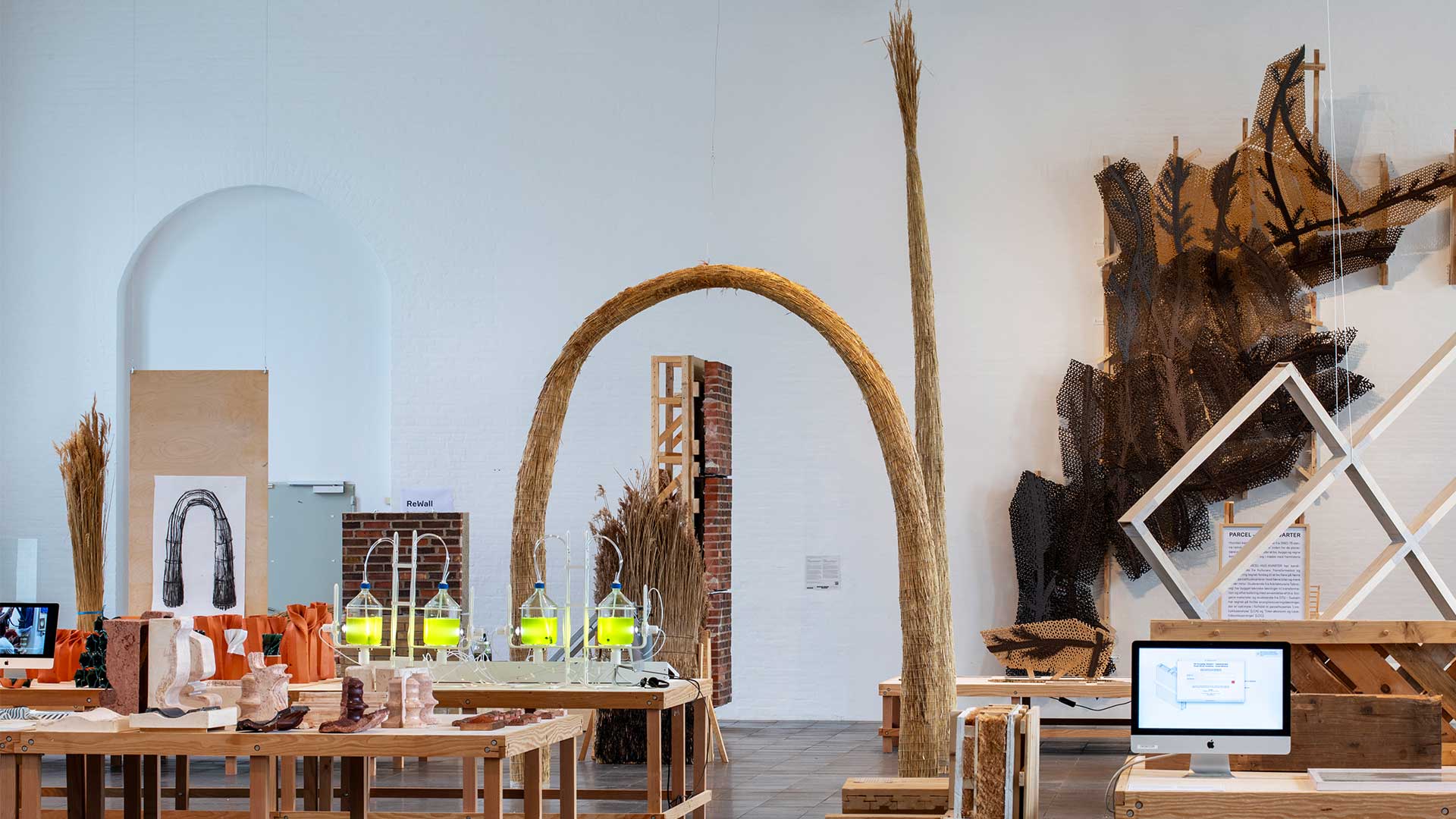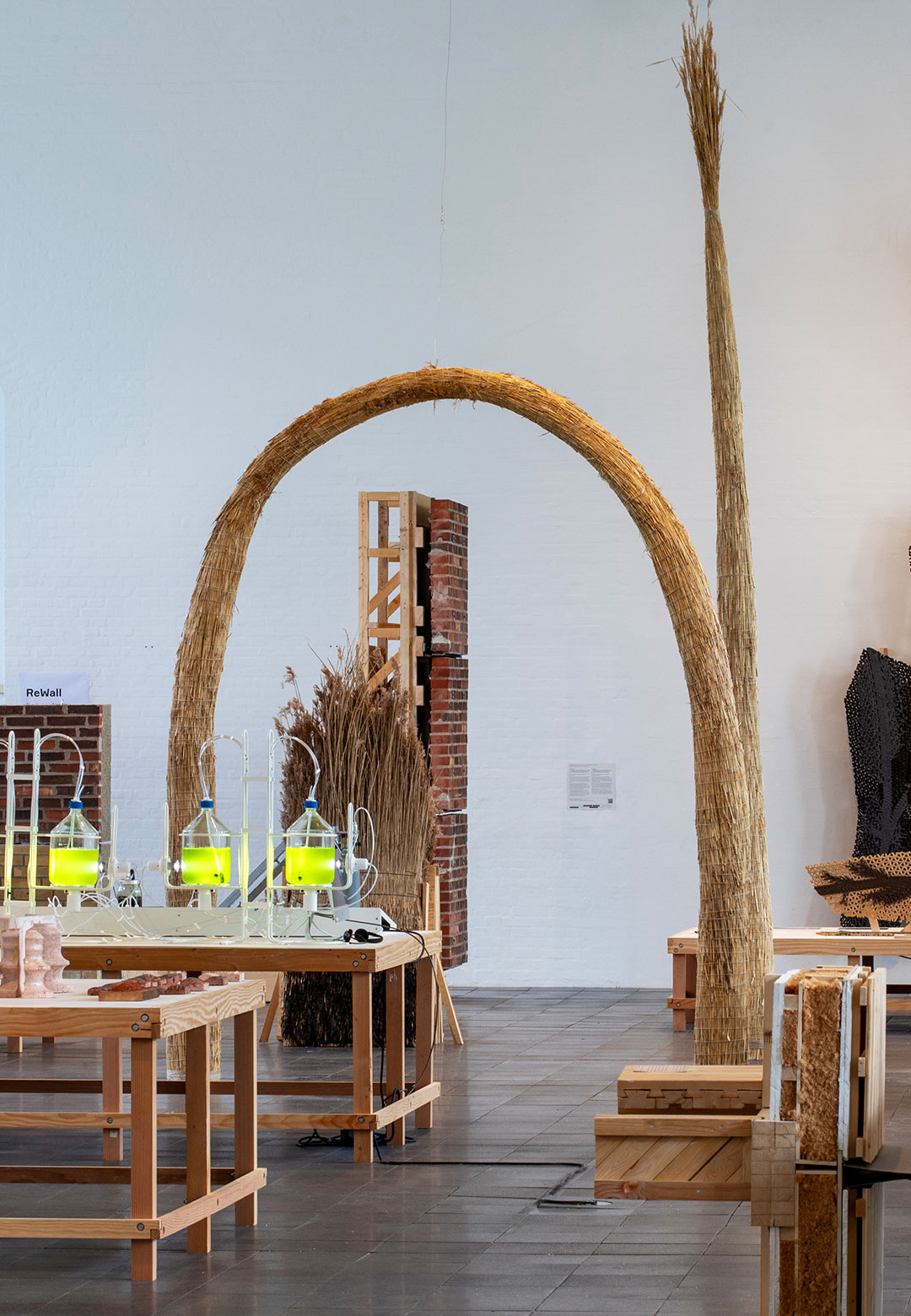To understand and act in favour of the general well-being of all sentient entities as well as the larger habitat, it is intrinsic, not only to employ popularly established methods of amelioration, but also to theorise such practices for an enhanced multifold action plan to be implemented with paramount understanding. One such theory is Planetary Boundaries. This theory not only helps describe and categorise our global limitations but also examines what the Earth can endure before irreversible imbalances begin to fester the ecosystem. The theory focuses on the needs of the planet rather than those of humans. An ongoing exhibition, namely Planetary Boundaries - Rethinking Architecture and Design, at the Royal Danish Academy, in Copenhagen, Denmark, seeks to draw the focus of visitors towards this multifaceted theory. The exhibition text implores, “What does the planet need in the struggle for its own survival and the survival of natural environments and human beings?”
On view from September 21, 2023, to April 7, 2024, the design exhibition comprises 25 showcases that evoke one or more of the nine parameters addressed in the theory. The exhibition is curated in collaboration with a selection committee of internal and external experts, namely Gustavo Ribeiro (Associate Professor), Else Skjold (Associate Professor), Susanne Jøker Johnsen (Curator), Pernille Weiss (Member of the European Parliament), and Johnny Svendborg (Chairman, Danish Association of Architects).
The exposition seeks to perceive the world from a fresh perspective—one that is pivoted on approaching the disciplines of design and architecture from the standpoint of planetary well-being. This came about as a response to the popularisation of conversations around climate change in recent years. While the Royal Danish Academy has, for quite some time, focused on the exploration of novel ways to reduce carbon emissions in building projects (by platforming and appending the processes of refurbishing and restoring instead of building anew), this recent showcase seeks to take a step back from these processes and ponder on the various parameters that can be addressed while seeking to counter climate change.
The Rector of Royal Danish Academy, Lene Dammand Lund, shares, “Given our task to develop knowledge and educate future generations of architects and designers, we have a responsibility to contribute to a more sustainable world. We believe that the artistic as well as scientific and technical skills of architecture and design are incredibly important when it comes to approaching the challenges and solving the problems we face today. The themed exhibition Planetary Boundaries is part of this long-term ambition, and our aim is to inspire and motivate professionals as well as politicians.”
Planetary Boundaries comprises a method for assessing the environmental state of the planet within nine areas that regulate the Earth’s stability and resilience. First proposed by Swedish scientist Johan Rockström and a group of 28 internationally renowned scientists (at the Stockholm Resilience Centre at Stockholm University, in Stockholm, Sweden) in 2009, the nine planetary boundaries, after several revisions, were quantified formally in September 2023. These include ‘Climate Change,’ ‘Change in Biosphere Integrity,’ ‘Land-System Change,’ ‘Freshwater Change,’ ‘Biogeochemical Flows,’ ‘Ocean Acidification,’ ‘Atmospheric Aerosol Loading,’ Stratospheric Ozone Depletion,’ and ‘Novel Entities.’ Crossing any of these boundaries increases the risk of generating large-scale abrupt or irreversible environmental changes. “These are referred to as planetary boundaries or a safe operating space within which humanity can continue to thrive and evolve in future generations,” an excerpt from the press release reads.
As of 2023, six of the nine boundaries have been construed as already transgressed. The model of Planetary Boundaries proposes that a global focus on climate change alone is insufficient for increased sustainability. Instead, it is essential to understand the interplay of various boundaries about the climate and biodiversity to establish organic sustainability. Planetary Boundaries have been used by the United Nations, the EU and other bodies in drawing up climate policies. It also serves as the foundation for a host of other climate-related theories.
Head of Exhibitions, and curator of the exhibition, Susanne Jøker Johnsen, shares, “The earth’s challenges are our challenges, and there is an urgent need for change in our way of looking at the world. Creating an exhibition within the theory of the Planetary Boundaries and working with 25 architecture and design projects from researchers and students is meaningful and exciting. The exhibited projects demonstrate ambitions for creating aesthetic and strong solutions to serious problems. The urgency for architecture and design is very clear when working with societal problems and still respecting the nine parameters described within the planetary boundaries.”
The 25 projects on display range from academic showcases to design-oriented installations. They are exhibits that delineate the potential of innovative design, building materials and disparate types of dwellings that leave behind little planetary footprint. The exhibition serves as an invitation to explore these experiments, explorations and proposals and rethink the norms in architectural and design practices.
One of the projects on display, namely ‘Earth Human Mediators,’ by Alex Hummel Lee, is a design tool developed for building processes. “In common architectural practice, earth and climate studies are often problems that are separated from the primary aesthetic intention — to identify and overcome a design challenge,” Lee shares. His project, ‘Earth Human Mediator,’ seeks to bridge the gap between these entities and processes. It hopes to provide an opportunity to reflect about the sun's direction and sun angles, the flow of wind and the proximity of water bodies. It encourages the user to ask questions such as, “How can elements be designed to become architectural qualities rooted in planetary elements that nourish and delight humans at the same time?”
Another showcase, focusing on biogenic innovations, undertaken by Anne Beim, Line Kjær Frederiksen, Lykke Arnfred and Henriette Ejstrup, and entitled ‘Biogenic Architecture – Planetary Opportunities,’ delves into the physical, aesthetic, and ecological potential of biogenic materials. With the inclusion of historical analyses and studies on radical building techniques, the researchers propose, through a design installation built with reed, straw and clay, the subversive potential of such entities in architecture.
‘Straw as a building material - a radical tectonic perspective,’ by Anne Beim, Pelle Munch-Petersen and Lykke Arnfred, is another exhibit that delves into the usability of a biogenic material, straw. “The projects analyse straw through a lens of radical tectonics and absolute sustainability. They investigate the development of building principles based on frugality and the cycles of Nature,” the exhibitors share.
‘The Happy Few,’ a short documentary on the eco-communities in northern Europe, by Astrid Juul Jørgensen and Alexandra Vamberg Belli, features various interviews with different residents from the housing projects in the area. Most of these projects were built using alternative approaches that are also ecological. “By visiting frontrunning eco-communities, the film questions who benefits from these models of housing, whose inhabitants often come from specific socio-economic groups or social strata. In essence, it focuses on what constitutes a good life for everyone, while living within the planetary boundaries,” the exhibitors share.
Charlie C Steenberg’s ‘Residential Neighbourhood’ is an exploration of how more people can reside on fewer square metres with fewer vehicles and more local nature areas, and Flemming Tvede Hansen and Isak Worre Foged’s ‘Therma Testa’ investigates and demonstrates the usage of local clay to create unique and atypical building elements. Frans Drewniak’s ‘Better Building Blocks’ aims to encourage a dialogue with the Danish brick industry, which is responsible for a significant proportion of the total carbon emissions. It invites visitors to examine ongoing experiments involving circular and healthy building practices, such as healthy materials, design for disassembly, conscious layering etc.
Isak Worre Foged and Valia Fragkia’s ‘Fibrous’ is a geometrical installation that focuses on the development of lightweight fibrous materials that can grow quickly, absorb high levels of carbon dioxide and have potential uses in creating composite structures for structural and thermal purposes. Nina Husted Erichsen and Jacob Sebastian Bang’s project ‘The Aesthetics of Crushing: design based on the transformation of ceramic construction waste,’ seeks to understand the potential of transforming ceramic construction waste into usable material, so as to consequently reduce the usage of clay in building projects undertaken in Denmark.
The ‘Organic Print’ by Malene Kristiansen and Bitten Hegelund promotes the usage of natural dyes over synthetic ones; Marcus Aminaka Wilmont’s ‘Limited Edition: Refashioning the Unwanted’ invites the rethinking of our approach towards design and products to produce long-lasting entities; and Mette Ramsgaard Thomsen and Martin Tamke’s ‘Pepeyoca: Light from Within’ showcases the integration of living systems into architectural design. Mathilde Lund Hutters’s ‘Algae evaporation’ exposes the harm posed by clay making on natural organisms; and Morten Meldgaard’s ‘CoLaB™’ is a card-based teaching tool that aims to shift focus away from individualism and towards co-creation and community, to develop holistic building models. ‘Biopolymer printing and Radicant,’ a project by Mette Ramsgaard Thomsen, Paul Nicholas, Martin Tamke, Ayoub Lharchi, Hasti Valipour Goudarzi, Carl Eppiger, Konrad Sonne, Tim Marvin Bruder and Gabriella Rossi, draws attention to biopolymer printing and its benefits in streamlining waste materials from the agricultural and food industry, into architectural building materials.
Another exhibit at the gallery, namely ‘Detailing Resilience’ by Olga Popovic Larsen, questions: “How can innovative approaches train and equip graduates to overcome environmental challenges?” The installation displayed at the gallery, and the project at large, is the physical manifestation of concepts underlying the Planetary Boundary Model. With the usage of reclaimed materials, the exhibitors seek to inspire lasting innovations using these materials. In a similar vein, ‘Bio Local Advanced Manufacture’ by Paul Nicholas, Antonio Scaffidi, Konrad Sonne and Nadja Gaudillière-Jami, seeks to envision a decentralised, small-scale manufacturing process using local Danish biomaterials.
‘Fungal Architectures’ by Phil Ayres, Adrien Rigobello, Claudia Colmo, You-Wen Ji, Jack Young, Karl-Johan Sørensen and Tereza Veselá, is a research project that explores the material domain of mycelium-based composites within a built environment context. Similarly, ‘FUNGATERIA’ is another research project by Phil Ayres, Adrien Rigobello, Claudia Colmo, Vilhelm Carlström and You-Wen Ji, that is pivoted on experimenting with fungi to make Engineered Living Materials. “Imagine a slipper made of mycelium-based vegan leather that repairs itself when damaged; or a sheet-like material that can naturally degrade environmental pollutants,” the participants explain.
Deane Simpson and Simon Sjökvist’s ‘Urbanism within boundaries – spatial practices beyond extraction’ explores alternative urban planning and large-scale architectural practices within the existing built environment, without building anew. ‘Earthbound’ by Sofie Piil Grau, on the other hand, is designed using biodegradable materials to show the vast potential for exploration, play and experimentation using fabric scraps. ‘Designing and Living with Organisms’ by Svenja Keune and Ariel Lim is an installation that is ‘a combination of experimental objects and allows for the open-endedness of discovering how local ecosystems engage with them, how the interaction changes over time, under different weather conditions and during different seasons, and how the researcher’s perception and way of living are impacted by living with the research experiments.’
Another showcase, ‘The Darning Cloth of Anna Auerbach’ by Trine Skødt, too, is a textile-centric showcase that presents the benefits of investigating into museum collections—in raising awareness of the expertise, skill sets and knowledge that were once interwoven into all the making and wearing of and caring for textile objects. Some other installations at the gallery include ‘ReWall - Circular transformation of a standard outer wall’ by Jørn Kiesslinger, Xan Browne and Jacobus A. M. Jaap Aanhaanen; and ‘Algae based polymer – transition towards biomaterial design’ by Antonio Scaffidi. While the former rethink the usage of recycled materials and fast-growing biomaterials to build structural entities, the latter suggests a replacement of polymers with smarter biobased designs.
The exhibition ‘Planetary Boundaries - Rethinking Architecture and Design’ is on view from September 21, 2023 to April 7, 2024 at the Royal Danish Academy, Danneskiold-Samsøes Allé 53 Copenhagen K, Denmark.






 Sign in with email
Sign in with email










What do you think?